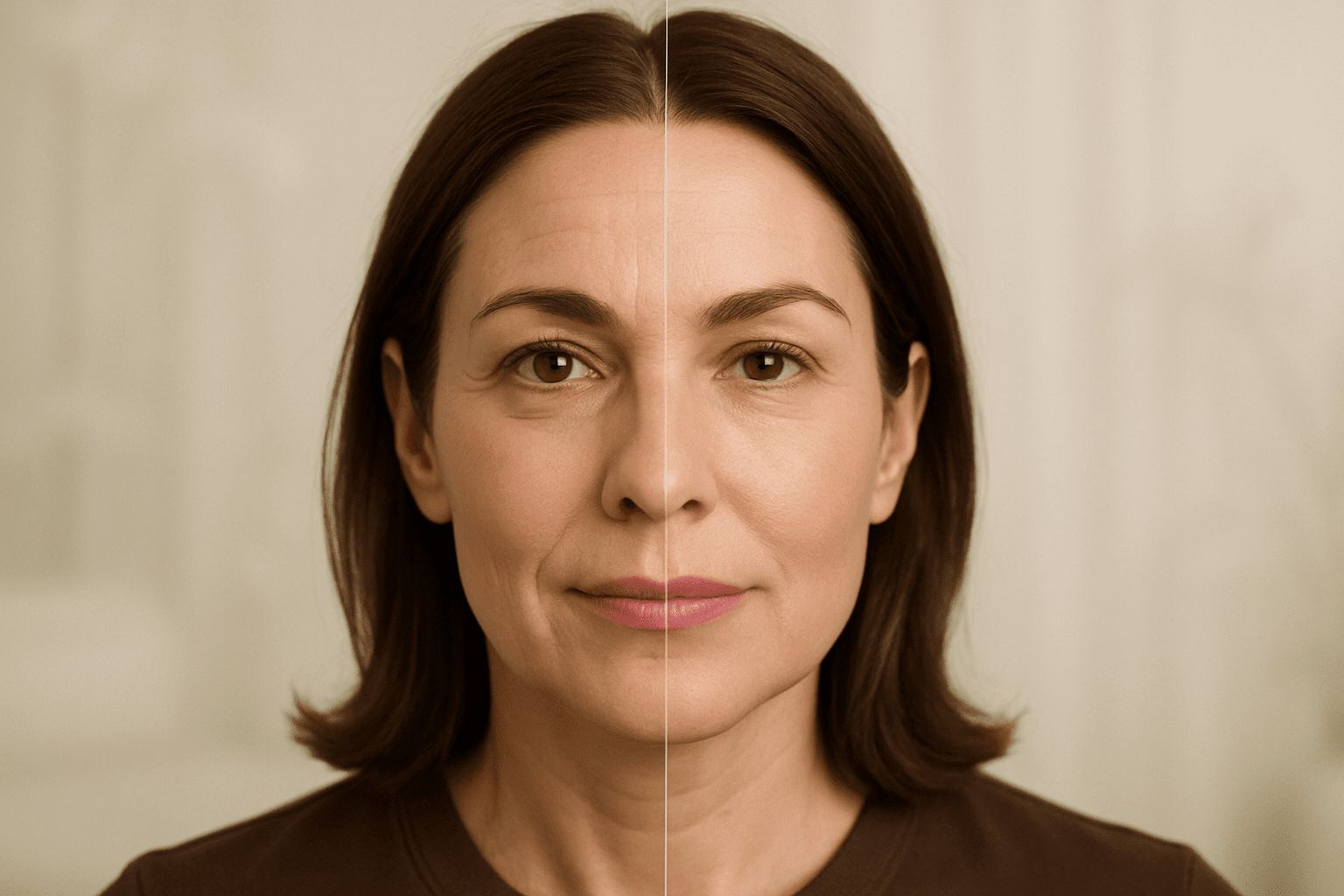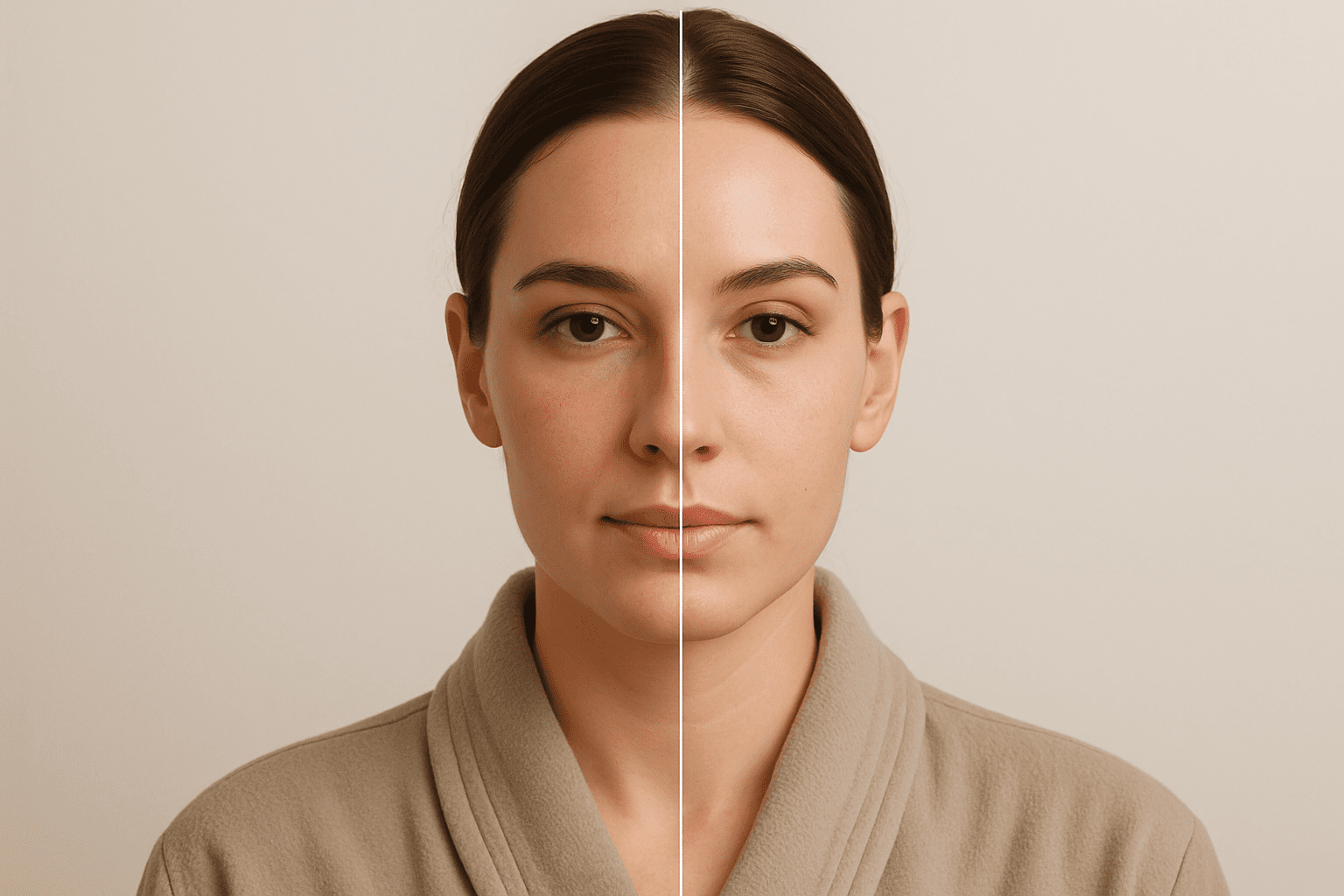Laser treatments are powerful tools for hair removal, pigmentation correction, and skin rejuvenation. But not all skin responds to laser the same way. That’s where the Fitzpatrick Skin Type system comes in. It helps providers safely and effectively tailor laser treatments to individual skin tones—reducing the risk of burns, discoloration, or adverse reactions.
In this guide, we’ll break down the Fitzpatrick types and explain why understanding this scale is critical for safe and successful laser treatments.
Jump To:
TLDR Quick Guide
- The Fitzpatrick scale classifies skin by how it responds to sun exposure
- Skin types range from I (very fair) to VI (deeply pigmented)
- Knowing your type helps providers choose the safest laser and settings
- Darker skin types require more caution to avoid burns or hyperpigmentation
- Always choose a provider trained in laser safety for all skin tones
What Is the Fitzpatrick Skin Type Scale?
Developed by dermatologist Thomas B. Fitzpatrick in 1975, the Fitzpatrick scale is a classification system based on a person’s natural skin color and how their skin reacts to sun exposure.
It ranges from Type I (very fair, always burns) to Type VI (very dark, never burns) and helps medical professionals determine the best approach for treatments like:
- Laser hair removal
- IPL (Intense Pulsed Light)
- Fractional CO2 resurfacing
- Laser pigmentation or vascular treatments
Breakdown of Fitzpatrick Skin Types
| Type | Skin Tone | Sun Response | Common Traits |
| I | Very fair (ivory) | Always burns, never tans | Pale skin, light eyes, red/blonde hair |
| II | Fair | Burns easily, tans minimally | Light skin, light eyes, blonde/brown hair |
| III | Light to medium | Sometimes burns, gradually tans | Olive tone, brown hair, darker eyes |
| IV | Medium to tan | Rarely burns, tans easily | Mediterranean, Hispanic, some Asian skin |
| V | Brown | Very rarely burns, tans well | Middle Eastern, South Asian, Afro-Caribbean skin |
| VI | Deep brown to black | Never burns, always tans | African or Afro-Caribbean descent |
Why Skin Type Matters for Laser Treatments
1. Melanin Sensitivity
Laser devices target melanin (pigment) in the skin. The darker the skin, the more melanin is present—which increases the risk of:
- Hyperpigmentation (dark spots)
- Hypopigmentation (light spots)
- Burns or blisters if incorrect settings are used
2. Laser Selection
Some lasers are safer for darker skin types than others. For example:
- Nd:YAG lasers (1064 nm wavelength) are preferred for Types IV–VI
- IPL and Alexandrite lasers can be too aggressive for melanin-rich skin unless used carefully
3. Treatment Protocols
Providers may adjust:
- Energy settings
- Cooling techniques
- Number of passes
- Spacing between treatments
based on your Fitzpatrick type to ensure safety and results.
Laser Safety Tips by Skin Type
For Lighter Skin (Types I–III):
- Most laser types are safe
- Watch for redness or temporary inflammation
- Sun protection is key to prevent post-treatment pigmentation
For Darker Skin (Types IV–VI):
- Insist on Nd:YAG or diode lasers
- Ensure provider uses test spots before full treatment
- Avoid tanning or sun exposure before and after
- Ask about cooling systems and pigment-safe protocols
Key Takeaways
- The Fitzpatrick scale helps determine how skin reacts to lasers and sun
- Skin types I–III generally tolerate most lasers well
- Types IV–VI require specialized care to avoid pigment-related side effects
- Nd:YAG lasers are safest for darker skin
- Always choose a provider experienced in treating all skin tones
FAQs
1. What is my Fitzpatrick skin type?
Your type is determined by how your skin reacts to sun—not just skin color. A professional consultation is the most accurate way to assess it.
2. Can people with darker skin get laser treatments safely?
Yes, but only with the right type of laser (like Nd:YAG) and an experienced provider.
3. Are IPL treatments safe for all skin types?
No. IPL is generally not recommended for Types V–VI due to higher melanin sensitivity.
4. What happens if the wrong laser is used?
Using the wrong laser or settings can cause burns, scarring, or permanent pigment changes.
5. How do I prepare for a safe laser treatment?
Avoid sun exposure, tanning products, and active skin treatments (like retinol or acids) before your appointment. Always follow pre- and post-care instructions.



